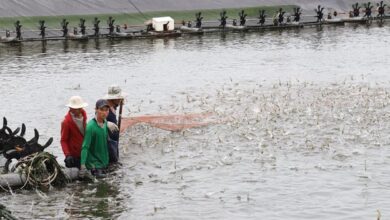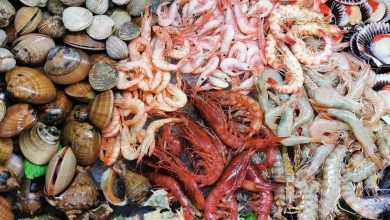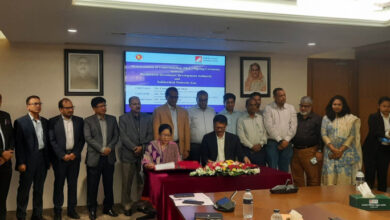
Blue foods, which include fish, shellfish, algae, and aquatic plants sourced from both freshwater and marine ecosystems, have emerged as a crucial component in the transformation of food systems. A recent study has found that certain foods have the potential to provide healthy nutrition to billions of people while also reducing food-related contributions to climate change. These foods are also able to sustain natural systems and support the livelihoods, economies, and cultures of many coastal and inland communities.
This is however the latest finding by a new Blue Food Assessment research. The study has compiled and analyzed various national data to identify the four crucial roles that blue foods can play in enhancing the food systems of a country.
These four major roles are nutrient deficiencies in B12 and omega-3s; high rates of cardiovascular disease linked to excessive red meat consumption, specifically processed meat; high environmental impacts; and climate adaptation and resilience to protect the value of blue food systems to diets, economies, livelihoods, and cultures.
“Despite the widespread consumption and reliance on seafood globally, the untapped potential of these aquatic resources to positively impact both humans and the environment is often overlooked,” says Ben Halpern, a marine ecologist at the University of California, Santa Barbara, director of the National Center for Ecological Analysis & Synthesis, and a member of the team.
Blue foods have been identified as a potential healthy alternative to traditional animal-sourced foods. Blue foods have the potential to play a significant role in reducing the incidence of non-communicable diseases, such as heart disease and certain cancers. By replacing the consumption of less healthy red and processed meats or preventing the transition to diets that contain large quantities of such foods, blue foods can promote healthier eating habits.
Blue foods have been found to be a great source of essential nutrients. A staggering 91% of countries experiencing vitamin B12 deficiency are also grappling with omega-3 deficiency. Moreover, deficiency in Vitamin B12 may indicate a more widespread issue of under nutrition. Similarly, a lack of omega-3 may suggest a low intake of blue foods.
Blue foods have been found to offer a sustainable source of nutrition with a significantly lower carbon footprint. Reducing carbon footprints is a relevant objective in the majority of the 89 countries where omega-3 enhancing policies are applicable, according to recent findings. A recent study has revealed that the consumption of red meat is contributing to high dietary carbon footprints in 124 countries.
Beatrice Crona, lead author, professor at the Stockholm Resilience Centre at Stockholm University, and co-chair of the Blue Food Assessment, said: The significance of blue foods in our diets, societies, and economies varies greatly across different countries and local settings.’
According to the study, policymakers in countries with high environmental food footprints and high levels of cardiovascular disease should prioritize the production and accessibility of blue foods. These foods can serve as a healthier substitute for the consumption of red meats, which have a greater impact on the environment. The study’s findings suggest that improving access to blue foods could have a positive impact on both human health and the environment.
Policymakers in countries with high environmental food footprints and nutrient deficiencies may opt to promote a wider range of blue food production and encourage the consumption of affordable blue foods.
Farmed bivalves and small pelagic fish, such as sardines and herrings, have the potential to provide significant benefits to less affluent populations, while also having a low environmental impact.
“Policy-makers can investigate the blue food policies most pertinent to their national context by further adjusting the various parameters in the online tool. They can then use the paper as inspiration for blue food policies that can address current environmental and nutritional challenges,” said Jim Leape, co-director of the Stanford Center for Ocean Solutions, a key partner in the Blue Food Assessment.
In Bangladesh however, blue food consumption is quite high. This is due to the 710-kilometer-long coastline and the Bay of Bengal that encompasses the country. Fish and other crustaceans are an integral component of the Bangladeshi nutrition and culture, accounting for an estimated 60 percent of the nation’s animal protein consumption.
Blue food is most commonly ingested in Bangladesh as curries, stews, and fried dishes. Typically, it is served as a main course or as a side dish with rice. Fish curry (a spicy fish dish), fish fry, shrimp curry, crab curry (not across the country though), and fish bhuna are all well-liked dishes in Bangladesh. Traditional dishes such as pitha (a form of pastry prepared from maize flour) and bhorta (mashed vegetables) also contain seafood.
Varieties of fish, shrimp, crab, and squid are among the most popular seafood options. The annual consumption of fish in Bangladesh is estimated to be approximately 3 million metric tons. In Bangladesh, prominent fish species include Hilsa, Rupchanda, Pabda, Catfish, and Tilapia.
In Bangladesh, the demand for blue food is high and growing swiftly due to population growth, urbanization, and shifting dietary preferences. Several studies reported that Bangladesh is suffering from omega-3 deficiencies. According to the World Bank, over 36% of Bangladeshi children under the age of five are affected by chronic malnutrition, and nearly 11% experience from severe malnutrition.
However, the nation confronts a number of obstacles in fulfilling the demand for seafood, such as exploitation, pollution, and climate change. To assure a constant supply of seafood for its expanding population, the government of Bangladesh has taken essential steps to promote sustainable fishing practices and aquaculture.
Blue foods have been found to be crucial for nutrition, livelihoods, and revenue in as many as 103 countries across the globe including Bangladesh. Hence, implementing win-win policies could be the key to reducing malnutrition in certain settings. These policies would involve climate adaptations to ensure access to low-impact blue foods, while also creating quality jobs and removing barriers to wealth-generating benefits.
Therefore, producing blue foods for export can offer economic benefits for governments, individual businessmen, and the fishers community of the country.
Jaber Bin Abdul Bari
Department of Oceanography, NSTU




